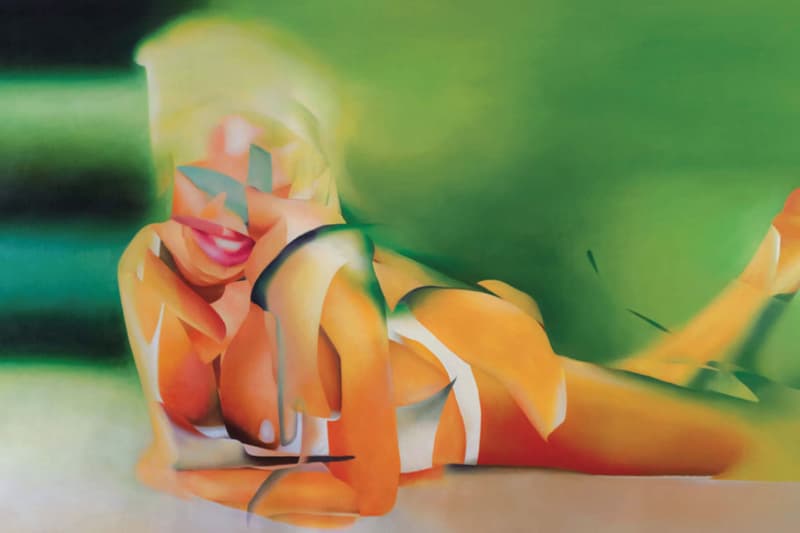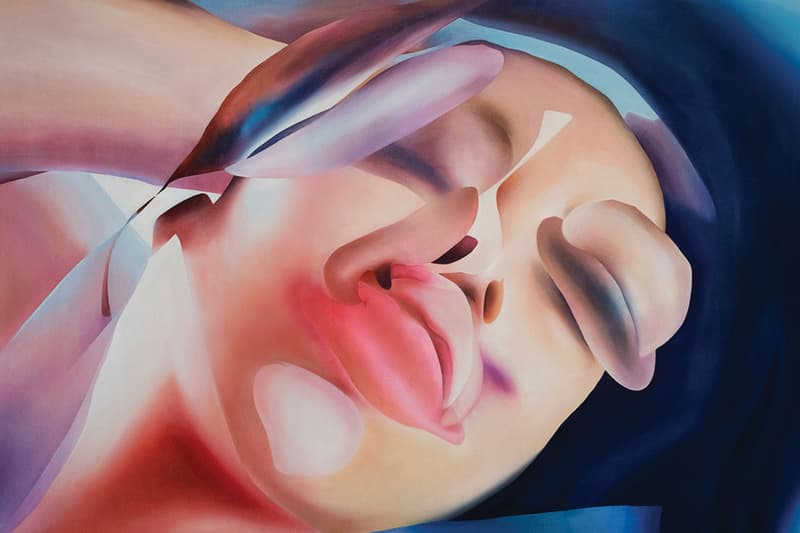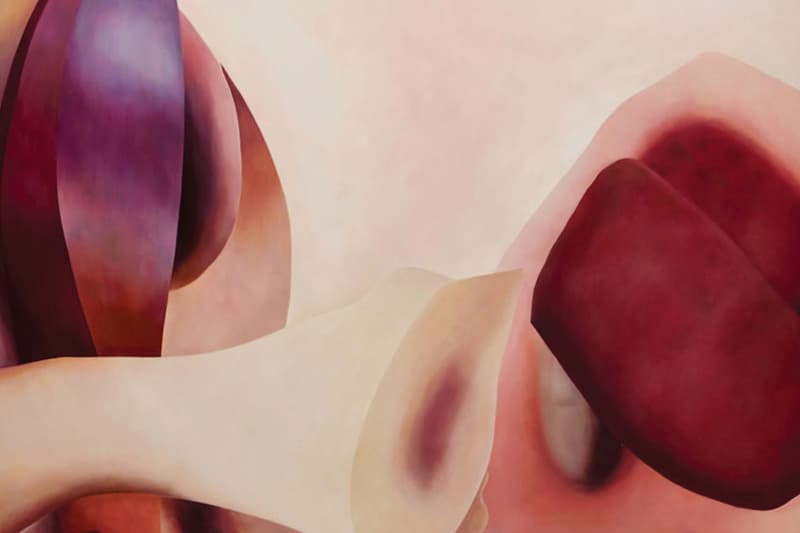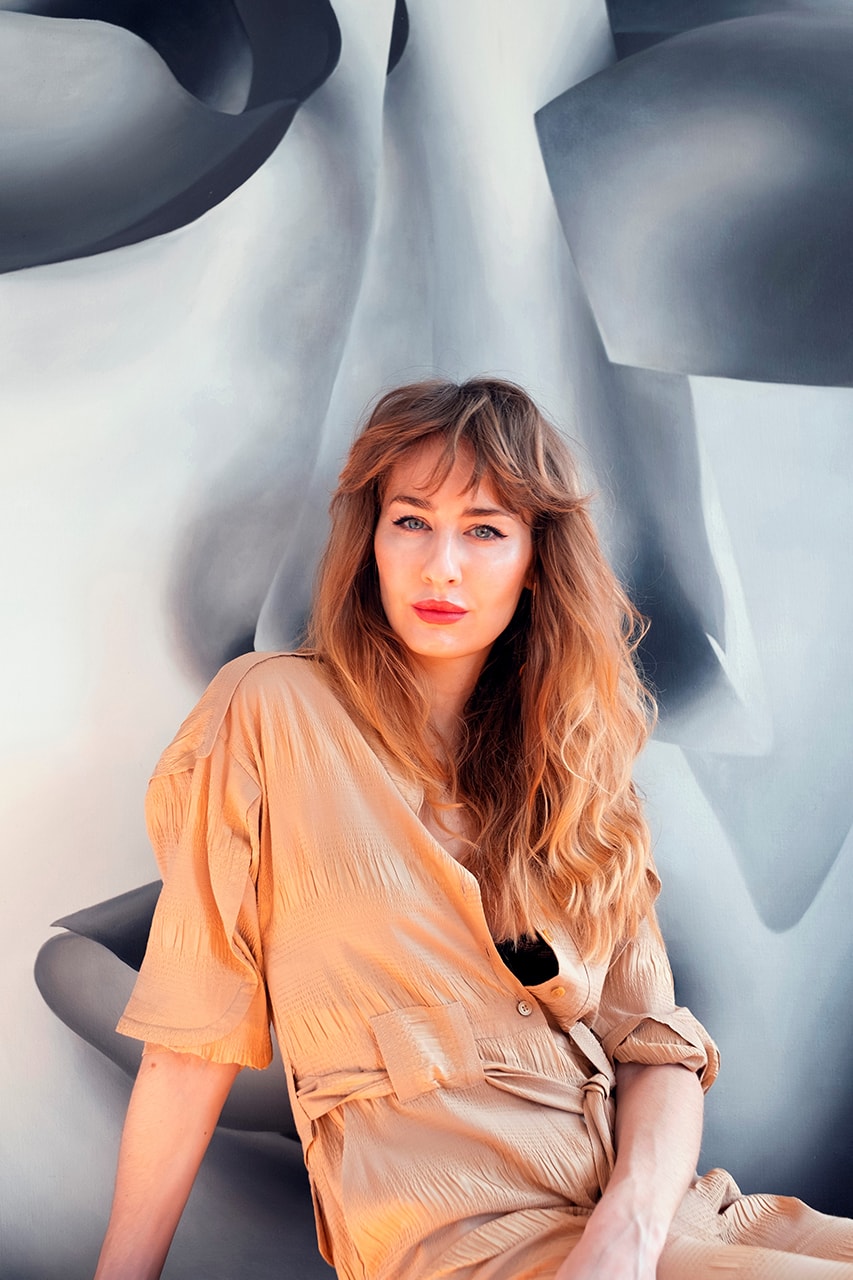


Growing up in Switzerland, artist Angela Santana found herself inspired by the vast landscapes of the country and the constant stream of art and culture. After studying art and art history for multiple years and experiencing the different creative languages of Paris and London, Santana moved to New York to focus on her craft. Drawing inspiration from the female form and its many different perceptions, the artist seeks to challenge the way we see the body for the better. “I learned to paint the image of the female form from an early age not in the image I imagined to be my own, but in the image of others before me,” Santana told Hypebae.
Keep scrolling to read our interview with Angela Santana, following her latest exhibition series at Saatchi Yates.
Tell us a bit about how you got started in the industry.
After the preliminary year at the renowned F&F art school and another four years of graphic design, including Art and Art History, I received my diploma and degree at Medien Form Farbe School in Zurich. I’ve always been experimenting with the combination of different techniques, manual and digital, with the goal to achieve my own distinct visual and artistic language.
How has growing up in Switzerland influenced the art you create?
Switzerland is an incredible place for inspiration. Be it the vast and versatile nature & landscapes, the location at the heart of Europe, the museums, art and of course the people. It is also the birthplace of Dadaism, a movement that I still draw inspiration from. Then there’s so many amazing artists that have shaped art history, for example Meret Oppenheim, or more contemporary artists that I admire like Miriam Cahn and Urs Fischer. I intuitively always knew that I wanted to gain experience abroad. Living abroad, working in different languages and soaking up the energy in metropoles like Paris and London before moving to New York further influenced my body of work.
You’ve said previously that your goal is to reverse the objectification of women as much as possible, how do you intend to do that through your work?
The female form and what it represents in art, culture and society has been shaped by those who depict its narrative, who paint its form. I learned to paint the image of the female form from an early age, not in the image I imagined to be my own, but in the image of others before me. I realized the whole world consumed an objectified and distorted view of the female form over centuries and centuries. What if I distorted the distorted and gave it new meaning, created a new narrative? Turned the object into a new subject? What if my hand was untrained and not willed by what it had learned, but rather was an extension to a digital tool, a digital paint brush minus the precise control of my hand, or of my own self? The idea was to erase the memory of the past and create a new celebrated image from it.

What can you tell us about your creative process, where do you start?
It takes hundreds of digitally painted layers to arrive at a final composition. My work is sparked by the mass of illicit imagery online. The first and most time consuming part of my process is digitally painting in hundreds of layers. I keep shifting and turning these painted parts until something new and interesting emerges, before then painting this composition in oil on canvas. I believe there is a sense of movement that is captured somehow and makes its way into the finished oil painting: Everything is in motion and floating, everything is possible. There are parallels to the Dadaist writers and their Découpé technique, an aleatory literary approach in which a written text is cut up and rearranged to create a new text and meaning. Gysin and Burroughs also applied this technique to printed media in an effort to decode the material’s implicit content, discovering the true meaning. I cite: “When you cut into the present, the future leaks out.” I use this approach to expand possibilities and juxtapositions and collaborate in a synergy with the computer and chance as if it would be my orchestra.
Why is the digital aspect important to you?
It allows me to be free. Whether this means free from bias, from preconceived expectations around the female form, or in composition, there’s an untamed energy and a freedom that can be felt in my figures. Or even in the sense that it is freeing in my artistic practice and approach, I never feel there’s a blank canvas. Everything is possible, beyond my imagination, because I believe even our imagination might be too influenced by all the images we’ve seen.
The new project brings together 14 of your large-scale works, what’s different about this project for you?
The series at Saatchi Yates came together over the last seven years. It feels a bit like a retrospective. I embrace the fact that not everything needs to be immediate. I allowed myself to reflect on my work and grow it over a long period of time. It’s a very conscious decision in this fast paced world we’re in. In this ongoing series, I found my own balance.
What do you hope that people will take away from it?
I hope my dedication and awe to the female body is apparent in a very joyful and powerful way. My figures don’t have to please and I hope they can grow on the viewer whilst also retaining a certain air of flux and enigma.
Finally, what’s next for you?
I’m continuing to deepen my practice, working on new paintings and developing triptychs. And, I will expand my techniques in combination of the digital and the manual in a new and unexpected way.

No comments:
Post a Comment